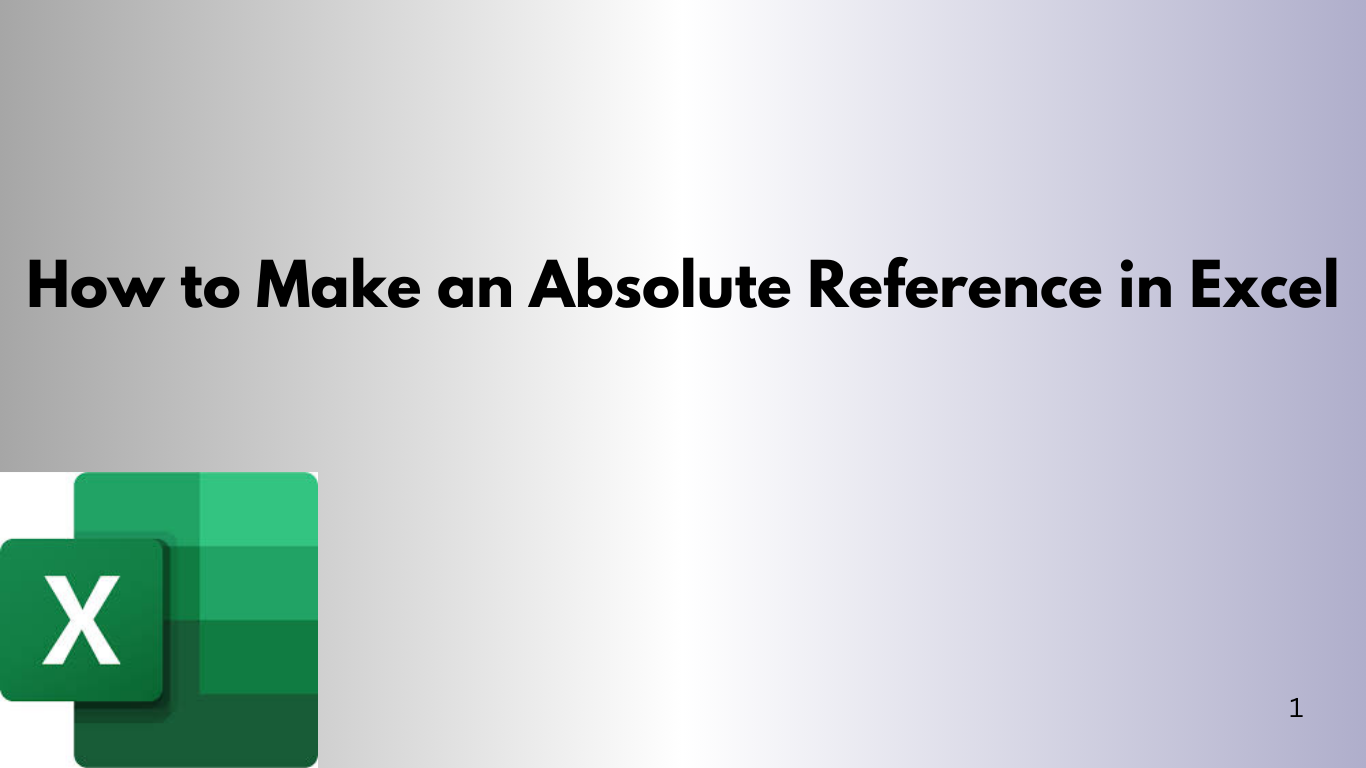In Excel, an absolute reference is a cell reference that stays the same when you copy or move it. It's great for keeping a specific cell in a formula the same, even if you copy it to other places.
How to Create an Absolute Reference in Excel
To make an absolute reference in Excel, just add dollar signs ($) before the column letter and row number in a cell reference.
Syntax of Absolute Reference:
- $A$1: This is an absolute reference to cell A1. Both the column (A) and row (1) are fixed.
- $A1: The column (A) is fixed, but the row (1) is relative. This means if you copy the formula to another row, the row number will change.
- A$1: The row (1) is fixed, but the column (A) is relative. This means if you copy the formula to another column, the column letter will change.
Example 1: Using Absolute Reference in a Formula
Let's say you need to calculate the total cost for items, but the tax rate should always be the same. Here's how you can do it:
| Item | Price | Total Cost |
|---|---|---|
| Apple | 2.00 | =A2*$B$1 |
| Banana | 1.50 | =A3*$B$1 |
| Orange | 3.00 | =A4*$B$1 |
The formula =A2*$B$1 in cell C2 multiplies Apple's price by the tax rate. The $B$1 is an absolute reference. So, no matter where you copy the formula, it will always use the tax rate from cell $B$1.
Example 2: Absolute and Mixed References
Sometimes, you might want to use a mix of absolute and relative references. Here's an example:
| Item | Price | Tax Rate | Total Cost |
|---|---|---|---|
| Apple | 2.00 | 0.10 | =A2*$B1 |
| Banana | 1.50 | 0.10 | =A3*$B1 |
| Orange | 3.00 | 0.10 | =A4*$B1 |
In this case, $B1 is a mixed reference. The row number 1 is fixed. So, if you copy the formula, the row reference to 1 stays the same. But the column letter (B) changes based on where you paste the formula.
How Absolute References Are Useful
- Fixing Constant Values: Absolute references are useful for keeping certain values the same across different rows or columns. For example, if you have a discount rate or tax rate that should be applied everywhere, absolute references help keep it consistent.
- Efficiency in Calculations: Using absolute references can save you time when you're copying and applying formulas. It's especially helpful when you're doing repetitive tasks or working with big datasets.
VBA Example to Use Absolute References
In VBA, you can use absolute references in formulas. Here's how to apply an absolute reference in a VBA macro.
VBA Scenario: Using Absolute Reference in a Formula
Imagine you need to multiply values in column A by a tax rate in $B$1. You want to do this automatically in Excel using VBA.
Sub ApplyFormulaWithAbsoluteReference()
Dim ws As Worksheet
Set ws = ThisWorkbook.Sheets("Sheet1")
' Apply formula with absolute reference in column C
ws.Range("C2:C10").Formula = "=A2*$B$1"
End SubIn this VBA code:
- The formula =A2*$B$1 is applied to cells C2:C10.
- The $B$1 is an absolute reference to cell B1, which holds the tax rate.
Running this macro applies the formula to C2:C10. Each cell in column C multiplies the value from column A by the tax rate in $B$1.
Key Points to Remember
- Absolute reference: Fixes both the row and column (e.g., $A$1).
- Mixed reference: Fixes either the row or column (e.g., $A1 or A$1).
- VBA: Use .Formula property in VBA to apply formulas with absolute references.
Conclusion
Absolute references are key when you want to keep certain cells fixed in a formula. This is crucial for stability when copying formulas in your Excel worksheet. Whether you're entering formulas manually or using VBA, knowing about absolute references will greatly improve your Excel skills.
